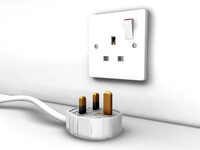 Under the Electricity at Work Regulations 1989, dutyholders (employers and self-employed people) are legally required to ensure that electronics with the potential to cause injury are maintained in a safe condition, so far as is reasonably practicable. Dutyholders are jointly responsible for equipment that is leased or provided by a contractor, unless it is solely used by the contractor.
Under the Electricity at Work Regulations 1989, dutyholders (employers and self-employed people) are legally required to ensure that electronics with the potential to cause injury are maintained in a safe condition, so far as is reasonably practicable. Dutyholders are jointly responsible for equipment that is leased or provided by a contractor, unless it is solely used by the contractor.
The way in which equipment should be maintained, how often, and by whom is not dictated by law. Nevertheless, most businesses use portable appliance testing (PAT) to ensure compliance with the aforementioned regulations, to keep their customers and employees safe, and to help protect themselves from liability in the event of an electrical accident.
PAT is the process of testing and visually inspecting movable appliances such as lamps, heaters and computers to ensure that they are safe for use. The electrical test requires specialist equipment, which checks non-visual features such as polarity, earth continuity and insulation resistance.
Health and Safety Executive (HSE) recommends that businesses perform a risk assessment to determine the frequency of PAT. The type of equipment, what it is used for, how often it is used, how often it is moved, and where it is used should all influence the maintenance schedule.
For example, HSE suggests a three-monthly PAT for 110V construction equipment, but annual testing for earthed (class I) appliances like electric kettles. Double-insulated (class II) equipment does not require PAT, but one or two visual inspections per year are recommended.
An electrically competent person with the necessary equipment and knowledge should be employed to perform PAT, in order to minimise risk and ensure proper execution. It is recommended that dutyholders hire a registered electrician to complete the work.
Electrical professionals will usually label tested items with PAT stickers, like those available from Label Bar. ‘Pass’ stickers provide peace of mind to users, and make it easy to remember recommended re-test dates.
Any appliances labelled with a ‘fail’ sticker should be removed from the premises and repaired or replaced. Remember that electronics should be disposed of responsibly: Recycle Now has more information, and a tool to help you find your nearest recycling centre.
Dutyholders may also find it useful for PAT testers to record results in a maintenance log. This will make it easier to review activity, and identify any patterns of misuse or electrical faults. In the event of an inspection or injury, a log will also help verify your compliance with the Electricity at Work Regulations 1989.
Remember, even if your business conducts PAT regularly, staff should be trained to notify the dutyholder of any visible problems with electrical appliances, such as loose wires or bent plug pins — This University of Essex guide outlines some common issues. It is also important that employees only use equipment for its intended purpose, and in its intended environment(s).